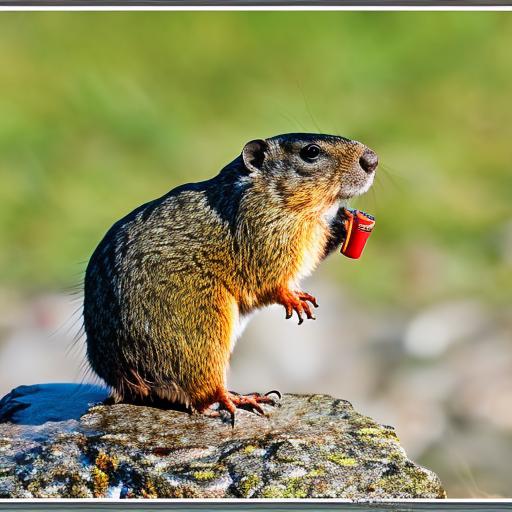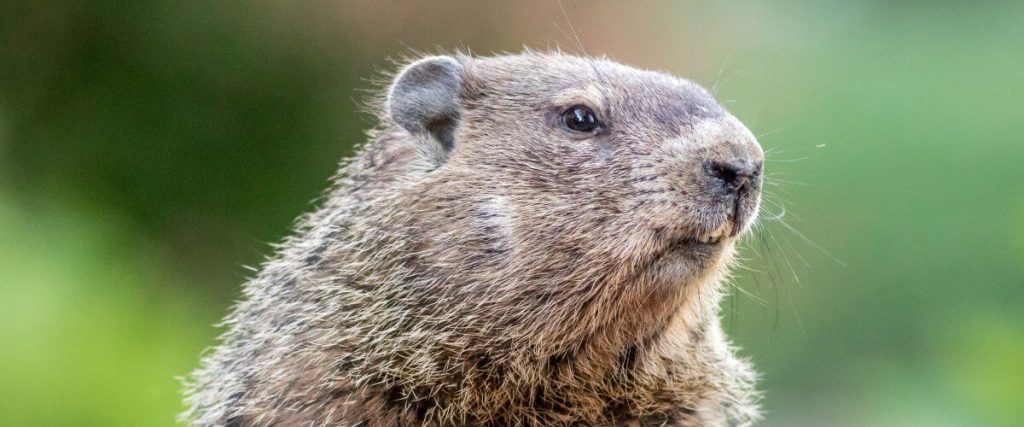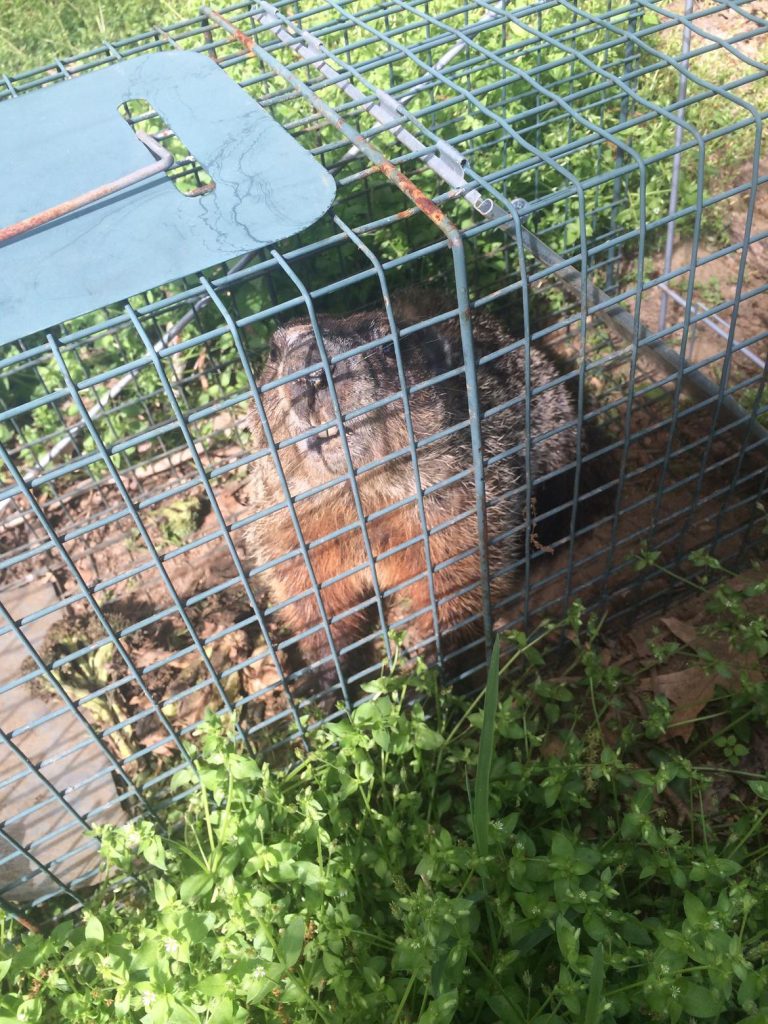Your cart is currently empty!

Are You Using the Wrong Bait? Discover What Bait to Use to Catch a Groundhog!

Table of Contents
Introduction
Ah, the age-old challenge of trapping or hunting – finding the right bait. Ever found yourself out in the field, having meticulously set up your trap, only to realize you might have made a mistake in your bait choice? You’re not alone. One particular animal that can stump even the most seasoned hunters is the groundhog. It’s not just about finding any bait, but determining what bait to use to catch a groundhog effectively. Groundhogs, with their voracious appetite for fresh greens and garden veggies, can be deceivingly picky when it comes to a hunter’s choice of lure. I remember a time when, armed with what I believed was the perfect bait, I spent hours in wait, only to be left disappointed. It was a humbling lesson on the importance of understanding your quarry. Through years of experience, trials, errors, and learning, I’ve garnered insights that I believe can aid hunters of all skill levels. Let’s delve into the world of groundhog baiting and find out if you’ve been using the right bait or if there’s room for improvement.
Understanding Groundhogs: The Basics
Groundhogs, also known as woodchucks or whistle-pigs, are fascinating creatures with distinct habits and preferences. Found primarily in North America, they inhabit a wide range of environments, from open fields to the edges of woodlands. These creatures dig extensive burrow systems, which they use for sleeping, rearing young, and hibernating. An interesting fact about these burrows is that they can have multiple exits and rooms, allowing groundhogs to evade predators and quickly escape when they sense danger.
Behaviorally, groundhogs are diurnal, which means they’re most active during the day, particularly in the early morning and late afternoon. This is an essential aspect for hunters to consider, as these times are the most effective for laying out bait. Their primary predators include foxes, hawks, and humans, which means they’re always on high alert, making the hunt all the more challenging and exciting.
Now, when it comes to their diet, groundhogs are primarily herbivores. They have a voracious appetite, particularly in the late spring and early summer when they bulk up for the winter hibernation. Their favorite foods consist of fresh greens, fruits, and the occasional insect. They love munching on clover, alfalfa, dandelions, and many of the vegetables you might find in a garden, such as beans, peas, and carrots. It’s this particular diet that sets the ground for the kind of bait you’d want to use.

In contrast to other small game, groundhogs have specific tastes. For instance, while you might successfully lure a rabbit with grains or nuts, a groundhog would probably turn up its nose. This distinction is crucial for hunters. The art of hunting or trapping is deeply rooted in understanding your prey, and groundhogs are no exception. Their discerning palate means that the usual baits you might employ for other small game might not cut it with them. It emphasizes the need to be particular about what bait to use to catch a groundhog.
Top Baits for Groundhog Hunting
Groundhog hunting can be both a challenge and a joy, with much of your success hinging on your choice of bait. A thorough understanding of the groundhog’s dietary preferences will ensure that you’re well-equipped to lure these critters effectively.
Natural Foods: What Are They and Why Do They Work?
Central to any baiting strategy is understanding the natural diet of the animal in question. Groundhogs are predominantly herbivorous, showing a significant preference for fresh greens, garden veggies, fruits, and occasionally feasting on certain insects.
Recommendations:
- Lettuce: A favorite of many groundhogs, lettuce is readily available and can be a great bait to start with.
- Pros: Easily accessible and quite affordable.
- Cons: Can wilt quickly in the sun, reducing its appeal.
- Alfalfa: This is like candy to groundhogs. It’s one of their primary foods in the wild.
- Pros: Highly appealing and effective.
- Cons: Might be harder to source in urban areas.
- Peas & Beans: These legumes are natural groundhog magnets when they’re fresh.
- Pros: Highly favored by groundhogs, especially fresh pods.
- Cons: Can be eaten quickly; you might need frequent replenishment.
- Carrots: A crunchy treat they find hard to resist.
- Pros: Lasts longer than other veggies and is highly enticing.
- Cons: Larger pieces might be dragged away, making the trapping less effective.
Understanding the natural diet and preferences of groundhogs provides invaluable insight into what bait to use to catch a groundhog. Using their favorite foods ensures you’re offering something they naturally seek, increasing the chances they’ll approach your trap.
Commercial Baits: An Overview of Popular Brands and Their Effectiveness
While natural foods certainly have their advantages, there’s also a place for commercial baits, especially when convenience is a primary concern.
Several top-rated commercial groundhog baits have been formulated to mimic the natural scents and flavors groundhogs find irresistible. Brands like RodentPro and GroundhogOut have received rave reviews from seasoned hunters for their effectiveness. These baits often combine various enticing ingredients, ensuring that they appeal to the broadest range of groundhog tastes.
However, with convenience often comes a cost. While commercial baits can save time and offer a longer shelf life than fresh veggies, they’re usually more expensive.
Convenience vs. Cost
Purchasing commercial baits might feel like an investment initially, but for those who hunt regularly, the time saved can be worth it. On the flip side, if you’re hunting near a garden or have easy access to fresh produce, natural baits might be the more economical and effective choice.
Tips and Techniques for Effective Groundhog Baiting
While selecting the appropriate bait is a pivotal step, the art of baiting a groundhog goes beyond just the food choice. Over the years, I’ve found that the process of luring these critters is a culmination of strategy, understanding, and patience.
Choosing the Right Spot:
Groundhogs have specific habitats they prefer, which play a significant role in where you should place your bait. These creatures thrive in open fields and meadows, as well as along the edges of woodlands. They’re burrowers, meaning they dig extensive tunnel systems where they live, rear their young, and hibernate. Look for signs of groundhog activity, such as fresh dirt mounds or well-worn paths leading to and from feeding areas.
When you’ve identified signs of groundhog activity, the next step is setting up your bait nearby. It’s usually best to place the bait close to the burrow’s entrance or along their routine path. Doing this ensures that the groundhog encounters the bait naturally during its daily foraging activities.
Securing Your Bait:
One common challenge many hunters face is other wildlife getting to the bait before a groundhog does. Birds, squirrels, raccoons, and other creatures might be tempted by what you’ve set out. To ensure your bait stays put:
- Use a sturdy bait holder or stake to secure larger vegetable baits in place.
- Opt for a wire mesh or cage to protect the bait from birds while still allowing its scent to attract groundhogs.
- Consider using a bait station or trap designed specifically for groundhogs, ensuring other animals can’t easily access the bait.

Observation and Patience:
The task of baiting a groundhog isn’t always a swift one. Unlike some other animals, groundhogs can be wary of new objects or food in their environment. It’s crucial to be patient and observe their behavior.
I recall a particular time when, after days of seeing no activity, I was tempted to move my setup. However, I decided to give it one more day. That very evening, I watched from a distance as a hefty groundhog approached the bait cautiously, sniffed around, and eventually began feasting. My patience had paid off. This experience reinforced that observation and waiting can be just as vital as the bait itself.
In summary, while understanding what bait to use to catch a groundhog is essential, the method in which you deploy that bait and the patience you exhibit can make all the difference in your hunting success.
Related Questions
How often should I change the bait when hunting groundhogs?
Freshness matters, especially when dealing with groundhogs. It’s advisable to check your bait daily. If you notice it’s wilted, dried out, or shows signs of being nibbled on by other wildlife, replace it. Fresh bait is more enticing, giving off a stronger aroma which attracts groundhogs. So, to maximize your chances, change the bait at least every 24-48 hours.
Is there a specific time of day that’s best for baiting groundhogs?
Absolutely! Groundhogs are diurnal creatures, meaning they’re most active during the day. Their peak feeding times tend to be early in the morning and later in the afternoon. Therefore, setting or refreshing your bait during these periods can significantly increase your success rate. It aligns with their natural feeding habits, making your trap or hunting spot more enticing.
What are common mistakes hunters make when choosing baits for groundhogs?
Many hunters mistakenly believe that any vegetable or plant matter will do. However, groundhogs have preferences. Using grains or nuts, for example, won’t be as effective as fresh greens or garden veggies. Another common mistake is not securing the bait properly, allowing other wildlife to snatch it before a groundhog gets a chance. Lastly, some hunters neglect the freshness factor, leaving wilted or old bait out for too long.
How can I combine multiple baits for maximum effect?
Diversity can be your best ally. Consider creating a mini buffet for the groundhogs by offering a combination of their favorite foods. You might place a piece of lettuce alongside a fresh carrot and a sprinkle of beans or peas. This mixture can cater to varied tastes and increase the appeal of your baiting spot. Remember to arrange them in a way that requires the groundhog to come closer or into your trap, increasing the chances of a successful catch.
Are there any scents or attractants that can complement the bait?
Indeed, there are commercial attractants available that mimic the natural scents groundhogs find appealing. These can be especially useful when combined with fresh bait. For instance, an attractant that replicates the scent of ripe fruits can complement a veggie bait setup. However, it’s essential to use these sparingly. Overwhelming or unnatural concentrations can make groundhogs wary, so always follow the manufacturer’s recommendations.
Summary
In our quest to master the art of hunting and trapping, understanding what bait to use to catch a groundhog is crucial. It’s not just about throwing out any food and hoping for the best. Groundhog hunting, much like any other form of hunting, requires strategy, observation, and a deep understanding of the animal’s preferences. With the varying options from natural to commercial baits, it’s vital to select what resonates most with these creatures. Remember, every region, and sometimes even specific locations within regions, can have nuances. What works for me might need slight tweaks to work for you. Experiment with different bait types, observe their reactions, and adjust accordingly. And while bait is an essential factor, the success of your hunt also depends on your patience, observation, and, sometimes, a little bit of luck. I encourage you to take the insights shared in this article to heart and use them as a foundation. From there, tailor your approach, be adaptable, and most importantly, enjoy the process. After all, every hunt is a new story waiting to be told.

Herb has been a longtime lover of the outdoors. Whether it be hunting, camping, fishing or just getting outside to reset. Proud father and animal lover. Bourbon anyone?

by
Tags:
Comments

Categories
- Big Game Hunting (301)
- Deer (202)
- Reviews (3)
- Shooting (16)
- Slingshot (1)
- Small Game Hunting (42)
- Upland Hunting (126)
- Waterfowl Hunting (3)





Leave a Reply